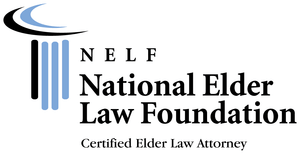Who Should Be the Beneficiary of Your IRA?
/How would you like to turn your modest tax-deferred account into millions for your family? Depending on whom you name as beneficiary, you can keep this money growing tax-deferred for not only your and your spouse's lifetimes, but also for your children's or grandchildren's lifetimes. That can turn even a modest inheritance into millions.
Don't I have to use this money for my retirement?
When you reach a certain age, usually 70 1/2, Uncle Sam says you must start taking your money out. (This is called your required beginning date.) But if you don't use all this money before you die, naming the right beneficiary can keep it growing tax-deferred for decades.
How much will I have to take out?
Calculating the amount you must withdraw each year (your required minimum distribution) is much easier now than it used to be. Each year, you divide the year-end value of your account by a life expectancy divisor from the Uniform Lifetime Table (provided by the IRS). The result is the minimum you must withdraw for that year. You can always take out more.
For example, the divisor at age 70 is 27.4. If your year-end account balance is $100,000, you divide $100,000 by 27.4, making your first required minimum distribution $3,650. Each year the divisor is smaller, but it never goes to zero. Even at age 115 and older, the divisor is 1.9. "To recalculate or not to recalculate" is no longer an issue. Everyone now gets the benefit of recalculating their life expectancy.
Doesn't my beneficiary affect my distribution?
Not any longer. Now, almost everyone uses the same chart to calculate distributions, even if you have no beneficiary. After you die, distributions are based on your beneficiary's life expectancy (or the rest of your life expectancy if you die without one.) Naming the right beneficiary is still critical to getting the most tax-deferred growth. That's much easier to do now, because you are no longer locked into the beneficiary you name when you take your first distribution.
Whom can I name as beneficiary?
You have five basic options: your spouse (if married); your children, grandchildren or other individuals; a trust; a charity; or some combination of the above.
Option 1: Spouse
Most married people name their spouse as beneficiary. And, in most cases, this will be your best option, because 1) the money will be available to provide for your surviving spouse and 2) it gives you the spousal rollover option.
Also, if your spouse is more than ten years younger than you are, you can use a different life expectancy chart that makes your required distributions even less. (This lets the tax-deferred growth continue longer on more money.)
How does the spousal rollover option work?
If you die first, your surviving spouse can "roll over" your tax-deferred account into his/her own IRA, further delaying income taxes until he/she must start taking required minimum distributions at age 70 1/2.
When your spouse does the rollover, he/she names a new beneficiary, preferably someone much younger, as your children and/or grandchildren would be. After your spouse dies, the beneficiary's actual life expectancy can be used for the remaining required minimum distributions. The results, shown in the chart below, can be phenomenal.
For example, let's say your grandson is 20 when he inherits a $100,000 IRA from your spouse. Over the next 63 years (the life expectancy of a 20-year-old), the $100,000 IRA can provide him with over $1.7 million in income!
Under current IRS policy, your spouse can do this rollover and stretch out the IRA even if you had started taking required minimum distributions before you died.
*****
TOTAL INCOME FROM IRA OVER BENEFICIARY'S LIFETIME*
Age (20), Life Exp. (63.0)
Value of IRA When Inherited by Beneficiary ($50,000) = $882,865
Value of IRA When Inherited by Beneficiary ($100,000) = $1,765,731
Value of IRA When Inherited by Beneficiary ($500,000) = $8,828,658
Age (30), Life Exp. (53.3)
Value of IRA When Inherited by Beneficiary ($50,000) = $526,612
Value of IRA When Inherited by Beneficiary ($100,000) = $1,053,225
Value of IRA When Inherited by Beneficiary ($500,000) = $5,266,128
Age (40), Life Exp. (43.6)
Value of IRA When Inherited by Beneficiary ($50,000) = $321,210
Value of IRA When Inherited by Beneficiary ($100,000) = $642,421
Value of IRA When Inherited by Beneficiary ($500,000) = $3,212,106
Age (50), Life Exp. (34.2)
Value of IRA When Inherited by Beneficiary ($50,000) = $201,067
Value of IRA When Inherited by Beneficiary ($100,000) = $402,134
Value of IRA When Inherited by Beneficiary ($500,000) = $2,010,671
* Assumptions: 7% annual return; only required minimum distributions withdrawn. Income subject to income taxes.
What happens if my spouse dies first?
If you don't remarry, you lose the rollover option. (It is only available to spouses.) This used to be a problem, because distributions after your death would still be based on your and your deceased spouse's life expectancies. But now you can name a new beneficiary, and after you die distributions will be based on the new beneficiary's life expectancy.
Are there any disadvantages of naming my spouse?
Your spouse will have full control of this money after you die and is under no obligation to follow your wishes. This may not be what you want, especially if you have children from a previous marriage or feel that your spouse may be too easily influenced by others after you're gone.
Also, if your spouse becomes incapacitated, the court could take control of this money. It could be lost to your spouse's creditors. And, finally, naming your spouse as beneficiary can cause your family to pay too much in estate taxes. (More about this later.) If any of this concerns you, keep reading.
Option 2: Children, Grandchildren, Others
If your spouse will have plenty of assets after you die, if you have reason to believe your spouse will die before you, or if you are not married, you could name your children, grandchildren or other individuals as beneficiary(ies).
This will let you stretch out your account without the spousal rollover. Remember, after you die, the distributions can be paid over your beneficiary's life expectancy.
Are there any disadvantages?
Anytime you name an individual as beneficiary, you lose control. After you die, your beneficiary can do whatever he/she wants with this money, including cashing out the entire account and destroying your carefully made plans for long-term, tax-deferred growth. The money could also be available to the beneficiary's creditors, spouses and ex-spouses. And there is the risk of court interference at incapacity. If any of this concerns you, consider using a trust.
Option 3: Trusts
Naming a trust as beneficiary will give you maximum control over your tax-deferred money after you die. That's because the distributions will be paid not to an individual, but into a trust that contains your written instructions stating who will receive this money and when.
For example, your trust could provide income to your surviving spouse for as long as he or she lives. Then, after your spouse dies, the income could go to someone else. The trust could even provide periodic income to your children or grandchildren, keeping the rest safe from irresponsible spending and/or creditors.
While you are living, the required minimum distributions will still be paid to you over your life expectancy. After you die, the required distributions can be paid to the trust over the life expectancy of the oldest beneficiary of the trust.
The trustee can withdraw more money if needed to follow your instructions, but the rest can stay in the account and continue to grow tax-deferred. You can name anyone as trustee, but many people name a bank or trust company, especially if the trust will exist for a long period of time.
Are there any disadvantages?
You will not be able to provide for your spouse and stretch out the tax-deferred growth beyond your spouse's actual life expectancy. That's because you must use the life expectancy of the oldest beneficiary of the trust which, in this case, would probably be your spouse.
Also, many trusts pay income taxes at a higher rate than most individuals, but this only applies to income that stays in the trust. (If you have a revocable living trust, this would only happen after you die.) Distributions from your tax-deferred account that are paid to the trust are subject to income taxes. And if the money stays in the trust, the higher tax rates would apply. But usually this is not a problem because the trustee distributes the money to the beneficiaries of the trust, who pay the income taxes at their own rates.
Finally, the trust must meet certain IRS requirements, including that it is a valid trust under state law.
Option 4: Charity
If you are planning to leave an asset to charity after you die, a tax-deferred account can be an excellent one to use. That's because the charity will pay no income taxes when it receives the money. And the account will not be included in your taxable estate when you die, reducing the amount your family may have to pay in estate taxes. (More later.)
Option 5. Split Your IRA Into Smaller Ones
You don't have to choose just one of these options. You can split a large IRA into several smaller ones and name a different beneficiary for each one. (If your money is in a company plan, you can roll it into an IRA and then split it.)
If you name several beneficiaries for one IRA, you must use only the oldest beneficiary's life expectancy. But with separate IRAs (one for each beneficiary), you can use each one's life expectancy, giving you the maximum stretch out.
This is especially important if a charity is involved. It has a life expectancy of zero, so the IRS would consider it the oldest beneficiary. Depending on when you die, this could cause the entire IRA to be paid out in just five years.
If you divide your IRA now, you will need to calculate a distribution for each IRA, but it can be worth the trouble. Under the new rules, your IRA can be divided even after you die. Splitting a large IRA can also save estate taxes.
What are estate taxes and why should I care?
Estate taxes are different from, and in addition to, income taxes. When you die, your estate will have to pay estate taxes if its net value (including your tax-deferred accounts) is more than the amount exempt at that time. In 2017, the estate tax "exemption" is $5.49 million for a single person and $10.98 million for a married couple. Every dollar over this amount is taxed up to 40%.
Estate taxes must be paid in cash, usually within nine months of your death. If money must be withdrawn from a tax-deferred account to pay the estate taxes, the result can be disastrous, because income taxes must be paid on the money that is withdrawn to pay the estate taxes.
What can I do about estate taxes?
You can reduce your taxable estate by giving some assets to your loved ones now. You can buy life insurance to pay estate taxes at a reduced cost. And, if you are married, make sure you use both your estate tax exemptions. One spouse may use the other spouse's exemption even after the death of the first spouse through portability.
How can splitting my IRA help?
Any assets you own (including a tax-deferred account) that you leave to anyone other than your spouse (your children, grandchildren or a trust) can use your exemption. Splitting a large IRA into smaller ones will make this easier to do.
What if I'm not married?
If you are single, naming a beneficiary(ies) will be less complicated because you have just one estate tax exemption and there will be no spousal rollover option to consider.
When can I change my beneficiary?
Under the new rules, you can change your beneficiary at any time while you are living, and the distributions after you die will be paid over that beneficiary's life expectancy.
In fact, now your final beneficiaries do not have to be determined until September 30 of the year after the year you die, which allows for some neat "clean-up" planning to be done after you're gone. For example, your spouse could "disclaim" some benefits so a grandchild could inherit. No new beneficiaries can be added after you die; you must have the right beneficiaries named on your account before then.
Some employer-sponsored plans (401(k), pension or profit sharing plans, etc.) have restrictions on beneficiary options. If your plan will not let you do what you want, rolling your money into an IRA will usually give you more options. If your money is in an IRA and the institution will not agree to your wishes, move your IRA to one that will.
What about the Roth IRA?
If you qualify, you may want to convert some or all of your tax-deferred money into a Roth IRA. You'll have to pay income taxes on the amount you convert, but it can be well worth it. If you qualify, you can also set up a new Roth IRA and make after-tax contributions to it.
Unlike a traditional IRA that requires you to start taking money out at 70 1/2, with a Roth IRA there are no required minimum distributions during your lifetime. And, generally, after five years or age 59 1/2 (whichever is later), all withdrawals are income tax-free. So you can leave your money there, growing tax-free, for as long as you wish.
You can stretch out a Roth IRA just like a regular IRA. After you die, distributions can be paid over the actual life expectancy of your beneficiary. Your spouse can even do a rollover and name a new beneficiary. And, remember, all distributions to your beneficiaries will be income tax-free.
Do I need professional assistance?
Yes, especially if you have a sizable amount in tax-deferred plans and your estate is large enough to pay estate taxes. The rules are still complicated and loaded with tax traps and penalties. Also, any time you name someone besides your spouse as beneficiary, you need expert advice.





